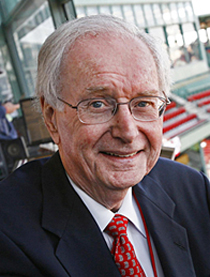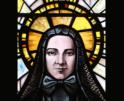
Culture
A player can be pretty good and, if he's lucky enough to remain healthy and have a long career, he's got a decent shot at induction into the Hall, but if he's great, really great -- like Lefty O'Doul was -- for a shorter period of time, fuggetaboudit.

Flavin
My pal George Mitrovich called the other day to talk about Lefty O'Doul. If you've ever wondered what two old guys talk about during the baseball season, now you know. We talk about guys even older than us, some of whom have been dead for a half century or more. O'Doul has been dead for only 49 years, but we talked about him, nonetheless.
For those of you who are not familiar, Frank "Lefty" O'Doul was a failed pitcher who broke in with the New York Yankees in 1919. He blew out his arm during his rookie year in a throwing contest; but he labored on as a fringe, sore-armed pitcher with Yankees, then the Red Sox, for four years with a grand total of one victory and one defeat. That's not just for a season; that's his lifetime record. Eventually he was exiled to the Pacific Coast League at the end of the 1923 season, his big league pitching career at an inglorious end.
In his time with them, he was not exactly a key member of the Yankee team. One day when they had a doubleheader scheduled he awoke to find it raining heavily. Figuring that the twin bill would be postponed he and a teammate went off to spend the day at the racetrack. Upon returning they found to their chagrin that the games had been played after all. Fearing that he'd be fined or even released for his unexcused absence, he showed up the next day up in the clubhouse, filled with trepidation, only to discover that the manager, Miller Huggins, had never noticed he hadn't been there the day before.
Anyhow, my friend George and I, who do not always agree on everything, do enthusiastically concur on this: Lefty O'Doul should be in the Baseball Hall of Fame.
That's because, once back in the Pacific Coast League, things started to get interesting. Lefty switched from pitching to the outfield. He taught himself to hit. Did he ever.
He returned to the majors in 1928 after a four year absence, a virtual rookie at the age of 31, and he became one of the greatest hitters in baseball history. He ended up with a career batting average of .349, the fourth highest in history and five points higher than that of the great Ted Williams. In 1929, for example, he hit .398 for the Philadelphia Phillies, racking up 254 hits in the process, a National League record that has since been tied but never broken. He was not just a slap hitter, either; in that '29 season he hit 32 home runs and drove in 122. But he was no longer a kid; by the time he got restarted, the end was already in sight. He retired following the 1934 season at the age of 37.
He was, by his own admission, not a defensive whiz. A story he often told on himself was that someone in a barroom cashed a check signing Lefty's name and the check bounced. Lefty called the bar's owner and suggested that if the guy ever came back, to take him outside and hit him some balls. If he catches them, Lefty said, you'll know it's not me.
He is perhaps baseball's greatest example of perseverance in the face of adversity for the way he turned a failed career into such a resounding success. He was living proof that when the going gets tough, the tough get going. His story is an example, not just for baseball players, but for all or us.
And he's not in the Hall of Fame! Go figure.
The reason, according to those who are supposed to know about such things, is that he didn't have a very long career. But he came up to the big leagues in 1919, lasted four years with a sore arm, then returned for seven more after reinventing himself as a great hitter. That's 11 years, and the requirement for eligibility for the Hall of Fame is 10 years. I'm not very good at math but I'm pretty sure that 11 is more than 10.
Here's the problem: too many people around baseball simply weigh statistics rather than analyze them. A player can be pretty good and, if he's lucky enough to remain healthy and have a long career, he's got a decent shot at induction into the Hall, but if he's great, really great -- like Lefty O'Doul was -- for a shorter period of time, fuggetaboudit. Life isn't fair -- and neither is the selection process for the Hall of Fame.
We haven't even touched on O'Doul's contributions to baseball after he retired as a player. He returned to his native San Francisco as manager of the Seals for 17 years. Not only was he fabulously successful, but he also became the most sought after hitting instructor in the game. He famously taught the DiMaggio brothers how to hit (not Vince, who could have used his help). Major leaguers trooped en masse out to the west coast to learn at the feet of the master.
Beginning in 1931 O'Doul made annual pilgrimages of his own to Japan, preaching the gospel of baseball and teaching the Japanese people how to play the game. He recruited teams to tour the country playing exhibitions there during the off-season. When the Japanese bombed Pearl Harbor, he took it as a personal affront. But once the war was over, he resumed his calling there as a baseball missionary and in the process helped to heal the wounds of war. The Japanese showed their appreciation for his pioneering efforts by naming him the first American to be inducted into the Japanese Baseball Hall of Fame.
But he's not in Cooperstown, New York, in the Baseball Hall of Fame. There is something wrong with that, and don't just take my word for it. Ask George Mitrovich, he'll tell ya.
- Dick Flavin is a New York Times bestselling author; the Boston Red Sox “Poet Laureate” and The Pilot’s recently minted Sports’ columnist.
Recent articles in the Culture & Events section
-
Scripture Reflection for April 14, 2024, Third Sunday of EasterDeacon Greg Kandra
-
St. Helena's House is established in the South EndThomas Lester
-
Is this synodality?Russell Shaw
-
Poking the hornet's nest of IVFFather Tadeusz Pacholczyk
-
A eucharistic word: MissionMichael R. Heinlein


















